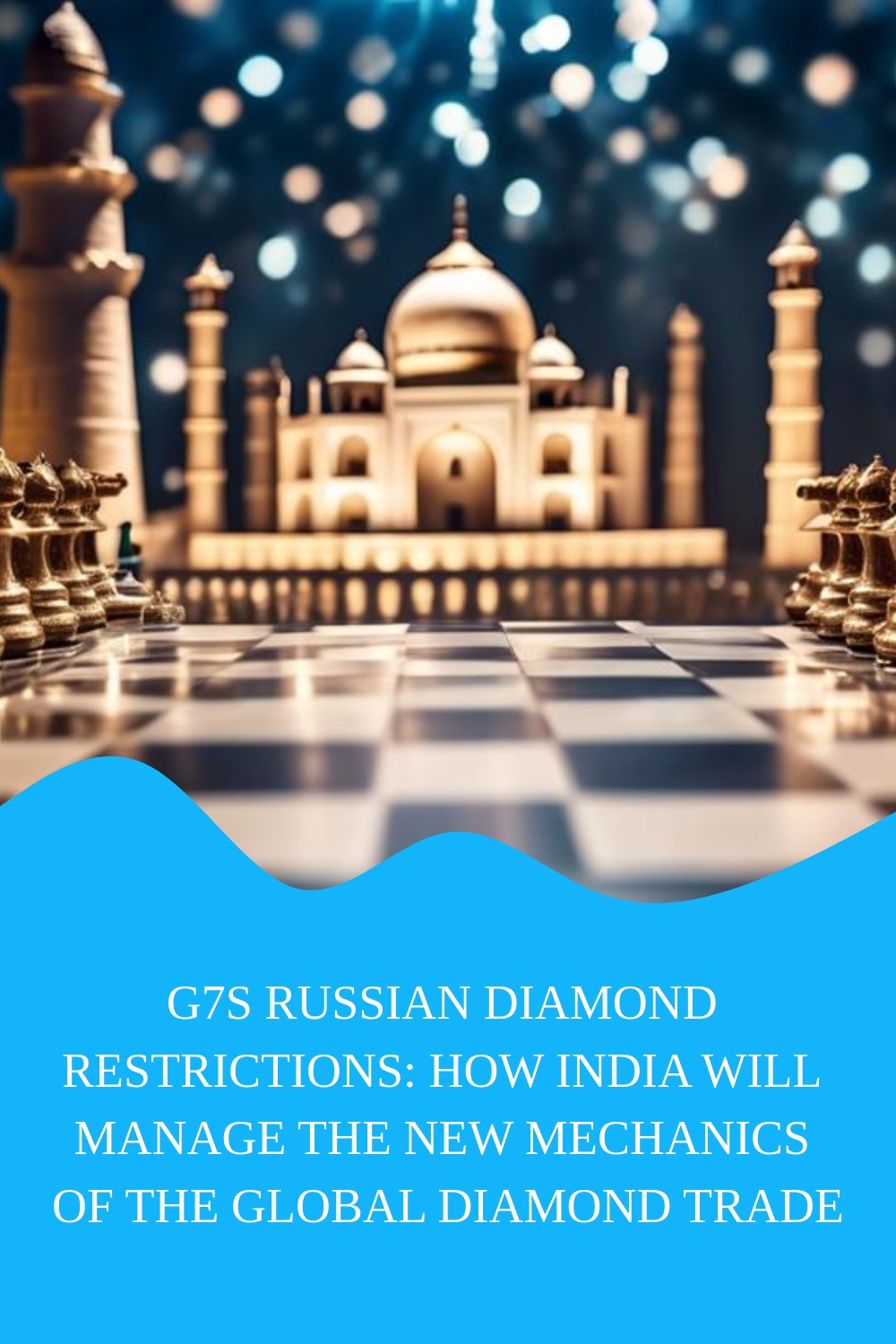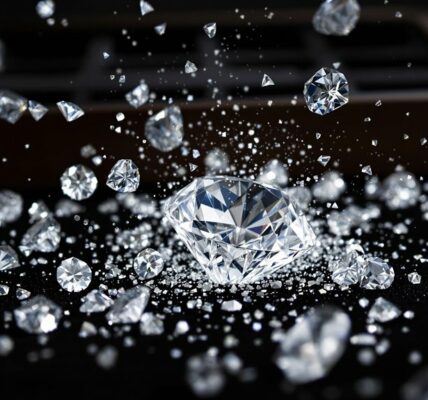G7s Russian Diamond Restrictions: How India Will Manage the New Mechanics of the Global Diamond Trade
In the labyrinthine realm of global commerce, the G7’s recent edict on Russian diamonds has unleashed a maelstrom, reverberating through the international corridors of the diamond industry with profound consequences.
At this saga’s epicentre stands India, a titan in the realms of diamond refinement and commerce with a 90% global market share in diamond cutting and polishing. This new embargo heralds a dual-edged sword for India’s diamond echelons—a formidable obstacle intertwined with a potential windfall. The Indian diamond contingent is now tasked with a high-wire act of adhering to these stringent norms while striving to uphold its linchpin status worldwide.
As the vanguards of the industry grapple with the ramifications of supply conduits and the moral quandaries tied to diamond provenance, the global audience remains spellbound. The pressing query thus emerges: In what manner will India recalibrate to these shifts, and what repercussions will unfold across the global tapestry of the diamond trade?
This article endeavours to peel back the layers of this dynamic tableau, delving into the kaleidoscopic reactions of a nation positioned at the vortex of an industry in flux.
Article Contents
- 1 Key Takeaways About the G7s Russian Diamond Restrictions
- 2 What are the new restrictions imposed by the G7 on Russian diamonds?
- 3 India’s Central Role in the Global Diamond Industry
- 4 What are the concerns of the Indian diamond industry?
- 5 Global Perspectives and the Antwerp Factor
- 6 How will these restrictions affect the global diamond industry?
- 7 Will there be a mechanism for verifying the origin of diamonds?
- 8 Frequently Asked Questions
- 8.1 How Do the G7 Russian Diamond Restrictions Impact the Livelihood of Individual Diamond Workers and Small-Scale Traders in India?
- 8.2 Are There Any Environmental or Sustainability Considerations Being Taken Into Account by the G7 Countries When Imposing These Restrictions?
- 8.3 What Alternative Sources of Rough Diamonds Are Indian Diamond Traders Exploring to Mitigate the Impact of the G7 Restrictions?
- 8.4 How Might These Restrictions Influence the Research and Development of Lab-Grown Diamonds as an Alternative Within India?
- 8.5 What Are the Legal Implications for Indian Traders Found to Be in Violation of the G7’s Russian Diamond Restrictions, and How Is the Indian Government Responding?
- 9 Final Thoughts
- 10 Further Reading About G7s Russian Diamond Restrictions
Key Takeaways About the G7s Russian Diamond Restrictions
- In an unprecedented and complex manoeuvre, the G7 conglomerate has executed a strategic imposition of constraints on the acquisition of Russian diamonds. This initiative, primarily targeting a vital segment of Moscow’s export portfolio, is intricately designed to orchestrate the economic isolation of the Russian Federation.
- The current embargo predominantly encompasses the procurement of unprocessed diamonds while granting immunity to their polished counterparts. This inadvertently paved the way for potential circumventions, allowing the entry of sanctioned, unpolished diamonds into the global market under the guise of refined stones.
- India’s stature as the preeminent centre for refining and enhancing diamonds places it at the forefront of this geopolitical chess game. This critical juncture necessitates thoroughly re-evaluating and adapting India’s sourcing and refinement methodologies in response to the newly established embargoes.
- The restrictions have raised concerns within the Indian diamond industry, particularly with respect to small diamond businesses, regarding trade policies, market volatility, and the potential impact on workforce stability and international sales.
What are the new restrictions imposed by the G7 on Russian diamonds?
As ongoing geopolitical tension escalates, the Group of Seven (G7) countries have recently implemented additional limitations on the importation of Russian diamonds. These restrictions are intended to target a vital Russian export and are part of a larger effort to economically isolate Moscow in retaliation for its actions in Ukraine.
An examination must be conducted to determine whether these sanctions are all-encompassing, prohibiting the sale of diamonds in all categories or whether specific varieties of diamonds are still exempt.
Does the ban include all types of diamonds?
The G7 nations have implemented a fresh set of limitations on the Russian diamond trade, specifically prohibiting the importation of raw diamonds while exempting refined diamonds from these restrictions. The distinction among various varieties of diamonds unveils an intricate terrain that stakeholders are required to traverse, contemplating:
Russian Sanctions
Trade loopholes: There might be ways to get around the ban on polished diamonds.
Certification challenges: Maintaining diamond traceability to stop authorised raw diamonds from going unapproved and turning up on the market as polished stones.
Diamond Differentiation
Market adaptation: India and other major companies are modifying their sourcing and processing strategies in response to the impact of constraints.
Surveillance of the supply chain: More care is required to preserve the world’s diamond supply chain’s integrity.

India’s Central Role in the Global Diamond Industry
India is the world’s leading centre for diamond cutting and polishing, and as such, it significantly impacts market dynamics and patterns of international commerce. In particular, the city of Surat is well known for its proficiency in converting raw diamonds into highly polished jewels. This expertise not only makes jewellery exports a substantial boost to India’s economy, but it also positions the nation as a vital link in the global supply chains for luxury products.
The Indian diamond industry has proven to be quite adept at adapting to changes in customer tastes and adopting technical improvements in the market. To satisfy the needs of a rising consumer base looking for reasonably priced and ethically sourced products, it has, for example, been at the forefront of incorporating synthetic alternatives into its product offerings.
Because of its capacity to adapt, India is able to prosper and maintain its competitiveness in the face of changing market trends and changes in the world economy.
What are the concerns of the Indian diamond industry?
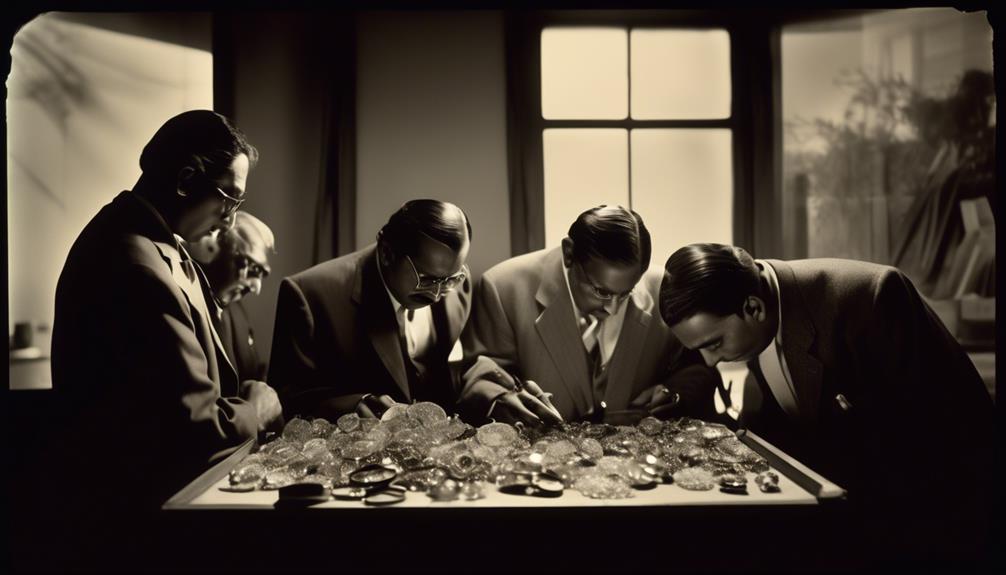
The industry expresses worries about the need for more flexibility in trade laws and procedures as India strengthens its position in the world diamond trade.
The strict regulatory framework and the erratic nature of the global markets present significant challenges, which are particularly detrimental to the small and marginal diamond units that form the backbone of the industry.
In order to maintain India’s diamond industry’s steady development and competitiveness internationally, it is imperative that these issues be resolved.
India’s Concerns and Calls for Flexibility
Strict international trade laws have alarmed the Indian diamond sector, which feels that it may limit its ability to remain flexible in the market and maintain a competitive advantage. Industry leaders are assessing the possible trade consequences, changes in supply and demand dynamics, rising costs from alternative sourcing, policy modifications, the need for updated domestic policies to support trade, and involvement in economic diplomacy to negotiate better terms in response to the G7’s restrictions on Russian diamonds. Furthermore, the Indian diamond sector is also exploring partnerships with other major diamond-producing countries to mitigate the impact of the G7’s Russian diamond restrictions. There is a concerted effort to diversify sourcing and explore new trade routes to ensure a steady supply of diamonds. The sector is also working closely with government bodies to develop a comprehensive strategy to navigate the shifting landscape of the global diamond trade in light of the G7’s Russian diamond restrictions.
Concerns regarding consumer effect, market resilience, the industry’s ability to absorb and adjust to disturbances, potential price hikes for end users, and maintaining access to a range of diamond goods are the foundation of the industry’s call for flexibility.
India’s diamond trade analyses the situation and aims to strike a balance between maintaining compliance and continuing to play a key role in the global market.
Impact on Small and Marginal Diamond Units
Small and marginal diamond units within India’s sector have unique obstacles that exacerbate the effects of global trade restrictions while acknowledging the wider concerns about market flexibility. Layoffs and price variations in the diamond industry, which disproportionately impact smaller and less resilient businesses, highlight these limits even further. Because they frequently depend on these units for their livelihood, artisanal miners are similarly susceptible to the cascading effects of declining exports and market instability.
| Concern | Impact on Small Units |
|---|---|
| Diamond layoffs | Reduced workforce stability |
| Market volatility | Unpredictable revenue |
| Export decline | Lowered international sales |
Analysing this scenario shows that the Indian diamond industry is under pressure from the dynamics of global commerce and needs flexible ways to continue operating in the face of changing economic conditions.
Global Perspectives and the Antwerp Factor
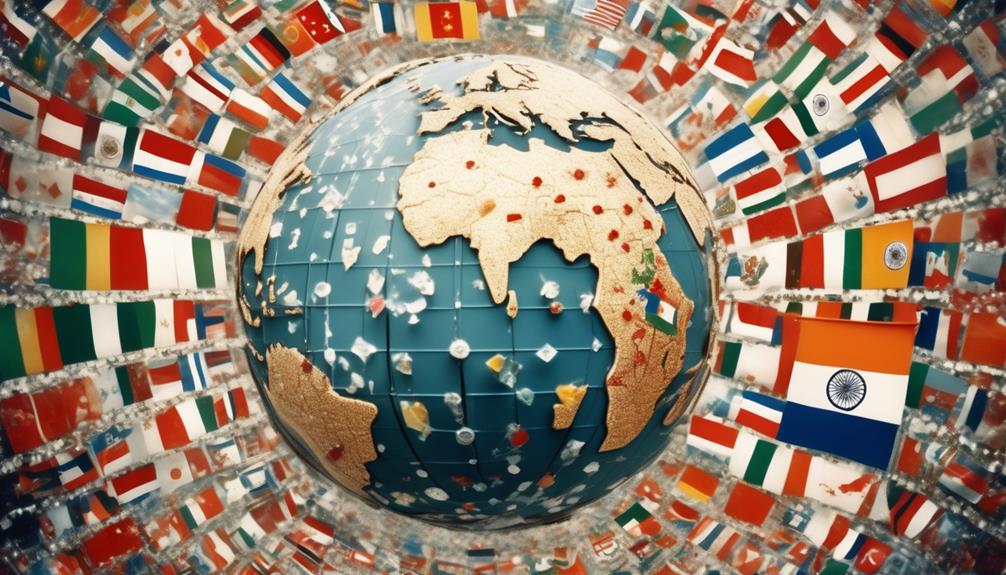
The diamond trade has long been regarded as centred on Belgium, and Antwerp, in particular, has a major influence on worldwide market dynamics. Because of its advantageous location in the diamond trade, the city serves as a gauge for the state of the worldwide diamond market, taking into account changes in consumer, political, and economic trends.
Analysing Antwerp’s role is essential to understanding how India may maximise its involvement in the world diamond industry.
What is the role of Belgium in this context?
Belgium, especially Antwerp, has long been recognised as a major participant in the raw and polished diamond markets among the complex web of international diamond commerce. With a history that has influenced industry standards, Antwerp is a venerable hub, thanks to Belgium’s experience in diamond logistics and trade diplomacy.
The city is home to several cutting centres, highly regarded for their excellence and skill and essential for turning raw diamonds into valuable jewels. Antwerp also has a strong commercial infrastructure, including facilities for shipping and processing and a vast network for exchanging diamonds.
This operational skill highlights Belgium’s function as a pivotal middleman, enabling deals and establishing standards in the world’s diamond trade. Because of this, changes in the market or policy, such as the limits imposed by the G7, have an influence on the global diamond movement and are transmitted through Antwerp’s trading channels.
How will these restrictions affect the global diamond industry?
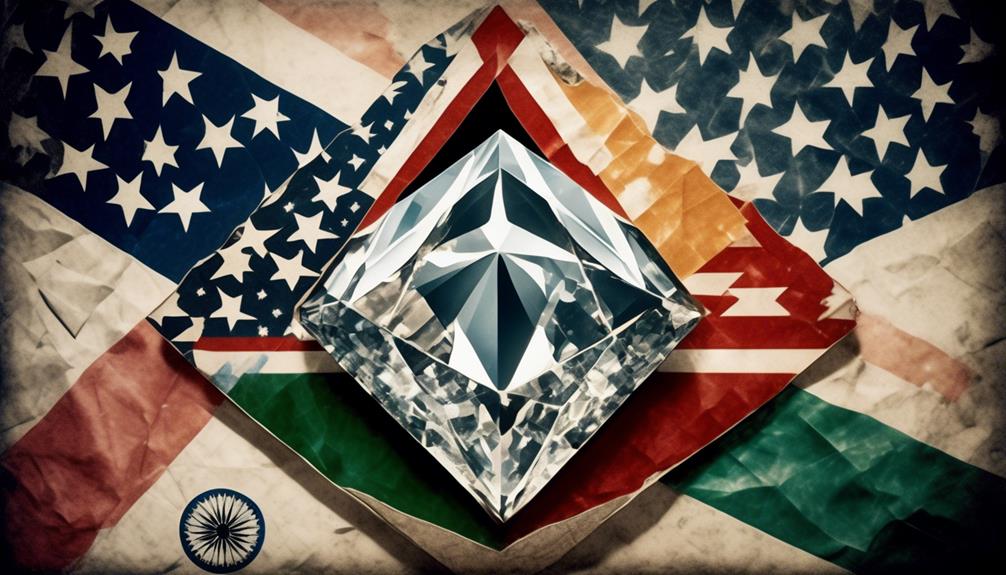
It is predicted that trade restrictions imposed by India, a major participant in the world diamond market, will substantially impact price, supply chains, and international trade relations. Given that India is a well-known centre for the cutting and polishing of diamonds, trade consequences resulting from these limitations can go beyond the local players and cause market instability. As producers and merchants look for alternate sources, supply modifications are probably going to be required, and price swings might result from shifts in the perception of diamond availability.
The way that consumers react to these dynamics might significantly alter demand trends. People in the sector need to be on the lookout, keeping an eye on the circumstances, and adjusting their plans as necessary. Potential effects are summarised in the following table:
| Impact Area | Possible Outcome |
|---|---|
| Supply Chain Adjustments | Redistribution of diamond sources and partnerships |
| Pricing Dynamics | Increased prices due to supply scarcity |
| International Trade | Shifts in trade flow and alliances |
| Consumer Market Reactions | Changes in purchasing behavior and preferences |
To effectively traverse the dynamic terrain of the global diamond trade, stakeholders must adopt an analytical approach to comprehending these consequences.
Will there be a mechanism for verifying the origin of diamonds?
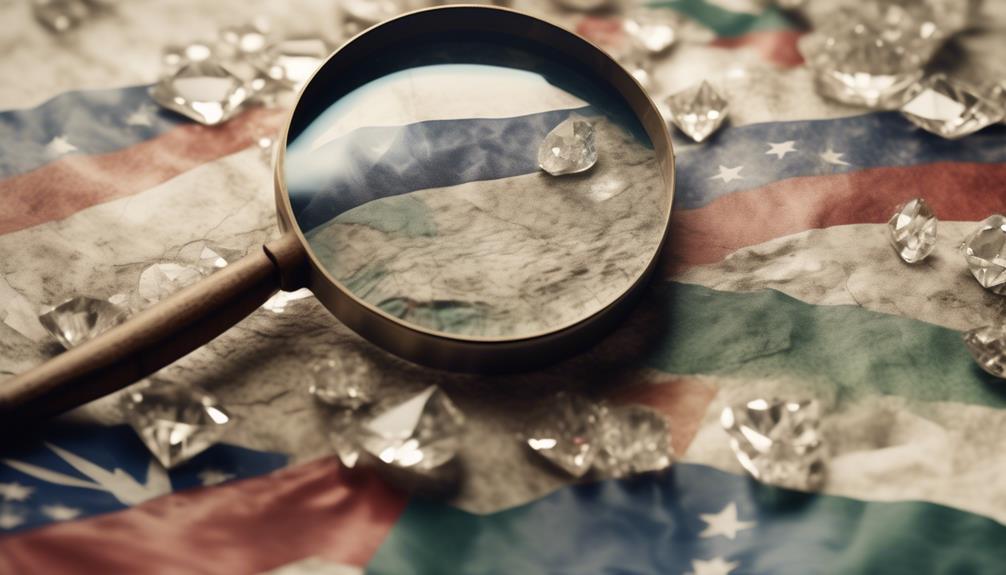
Given these predicted changes in the market, it is more important than ever to have a trustworthy system in place for confirming the provenance of diamonds in order to preserve openness and customer confidence. The global diamond industry is under more scrutiny than ever before, and consumer confidence and ethical sourcing compliance depend on a strong verification mechanism.
- Technology for tracking diamonds
- Diamond tracking and identification from mine to market using cutting-edge spectroscopic and laser inscription.
- Databases of geographic origin that link certain mines to particular atomic structures.
- Blockchain’s ability to track
- Systems of unchangeable ledgers guarantee the origin of diamonds at every stage of the supply chain.
- Opportunities for partnerships to improve traceability between technology companies and stakeholders in the diamond business.
Despite the success of the Kimberley Process in stopping the trade in conflict diamonds, there are demands for stricter regulations that take into consideration the possibility of gems coming from sanctioned sources and entering the market. Integrating blockchain technology may improve existing procedures as it provides a decentralised, transparent record. Concurrently, the emergence of synthetic diamonds offers a substitute that intrinsically ensures conflict-free status, according to customer preferences for sustainable and ethical goods.
As a result, an efficient verification system serves as both a compliance tool and a differentiator in a market where buyers are becoming more and more concerned about the moral implications of diamond sourcing.
Frequently Asked Questions
How Do the G7 Russian Diamond Restrictions Impact the Livelihood of Individual Diamond Workers and Small-Scale Traders in India?
The G7 restrictions may increase diamond smuggling and market volatility, prompting worker migration from artisanal mining. This tests community resilience and impacts the livelihoods of small-scale traders and individual diamond workers in India.
Are There Any Environmental or Sustainability Considerations Being Taken Into Account by the G7 Countries When Imposing These Restrictions?
The G7 countries consider environmental factors like carbon footprint, ethical sourcing, biodiversity loss, water pollution, and renewable energy adoption in imposing trade restrictions to promote responsible and sustainable industry practices globally.
What Alternative Sources of Rough Diamonds Are Indian Diamond Traders Exploring to Mitigate the Impact of the G7 Restrictions?
Indian diamond traders are exploring Botswana partnerships, African explorations, Canadian imports, Australian ventures, and Antwerp negotiations to diversify sourcing and mitigate the impact of recent trade restrictions on their industry.
How Might These Restrictions Influence the Research and Development of Lab-Grown Diamonds as an Alternative Within India?
The restrictions may serve as a catalyst, sparking increased investment in lab-grown diamond technology. Fostering technology transfer, they could enhance market competition and consumer acceptance, while navigating the ethical dimensions of synthetic diamonds.
What Are the Legal Implications for Indian Traders Found to Be in Violation of the G7’s Russian Diamond Restrictions, and How Is the Indian Government Responding?
Indian traders violating trade sanctions face legal consequences, prompting the government to address compliance challenges with enforcement strategies, balancing diplomatic relations while navigating the global regulatory environment.
Final Thoughts
In conclusion, the G7’s stringent measures on Russian diamonds introduce a glittering conundrum, casting a shadow on the sparkling prospects of the global diamond trade.
India’s pivotal role comes under the microscope, with the industry’s concerns reflecting the multifaceted challenges ahead. Within the past few days, India has requested a delay in the implementation of the new G7 rules as the Indian diamond industry is unclear about the rules as they apply to tracing the origin of diamonds.
The global stage, with Antwerp’s lustre dimming, must now adapt as the quest for a foolproof verification mechanism becomes akin to finding a needle in a haystack of gemstones. We think that the Indian diamond industry will find a way through these challenges. These restrictions were expected. Any shortage of diamonds will tend to increase the prices of naturally mined diamonds from the rest of the world. This will address a concern of the Indian diamond industry: low prices, which were the reason behind the Indian industry ban late in 2023.
Further Reading About G7s Russian Diamond Restrictions
- https://economictimes.indiatimes.com/industry/cons-products/fashion-/-cosmetics-/-jewellery/india-urges-g7-to-delay-ban-on-russian-diamonds-as-rules-lack-clarity/articleshow/106154850.cms
- https://edition.cnn.com/2024/01/22/style/eu-sanctions-russia-diamonds-jewelry-bof/index.html
- https://www.rferl.org/a/g7-russia-diamonds-sanctions-ukraine-war/32719485.html
- https://www.miningweekly.com/article/eu-adds-russias-biggest-diamond-producer-alrosa-to-sanctions-list-2024-01-03
- https://www.economist.com/the-economist-explains/2024/01/04/how-sanctions-on-russia-will-change-the-diamond-trade

